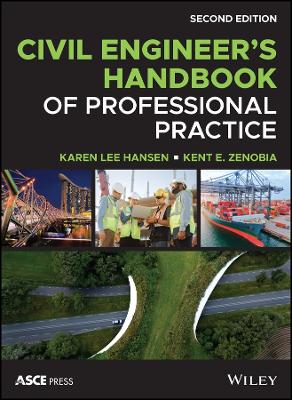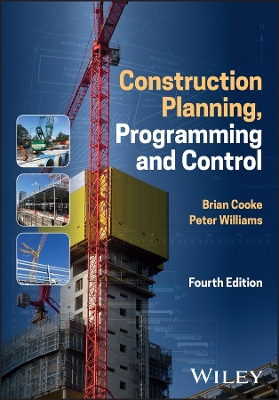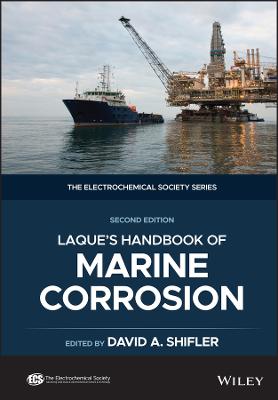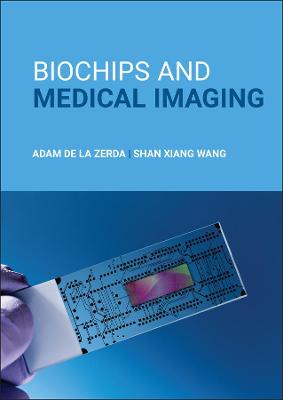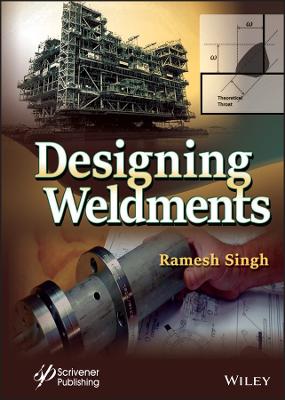Advanced Concrete Technology
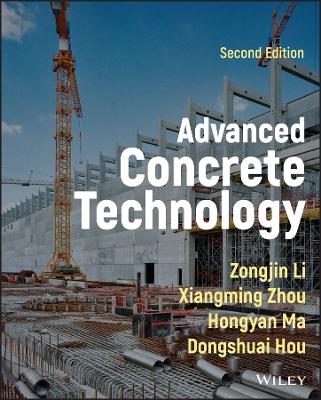 -15%
portes grátis
-15%
portes grátis
Advanced Concrete Technology
Hou, Dongshuai; Li, Zongjin; Zhou, Xiangming; Ma, Hongyan
John Wiley & Sons Inc
09/2022
624
Dura
Inglês
9781119806257
15 a 20 dias
1392
Descrição não disponível.
Preface
1 Introduction to Concrete
1.1 Concrete Definition and Historical Development
1.2 Concrete as a Structural Material
1.3 Characteristics of Concrete
1.4 Types of Concrete
1.5 Factors Influencing Concrete Properties
1.6 Approaches to Study Concrete
Discussion Topics
References
2 Materials for Making Concrete
2.1 Aggregates for Concrete
2.2 Cementitious Binders
2.3 Admixtures
2.4 Water
Discussion Topics
Problems
References
3 Fresh Concrete
3.1 Introduction
3.2 Workability and Rheology
3.3 Mix Design
3.4 Manufacture of Concrete
3.5 Delivery of Concrete
3.6 Concrete Placing
3.7 Curing of Concrete
3.8 Early-Age Properties of Concrete
Discussion Topics
Problems
References
4 Materials Structure of Concrete
4.1 Introduction
4.2 Classification of Materials Structural Levels
4.3 Structure of Concrete at Nanometer Scale: The C-S-H Structure
4.4 Structure of Concrete at the Micro-Scale
4.5 The Transition Zone in Concrete
4.6 Nano- and Micro-Structural Engineering
Discussion Topics
References
5 Properties of Hardened Concrete
5.1 Strengths of Hardened Concrete
5.2 Stress-Strain Relationship and Constitutive Equations
5.3 Dimensional Stability-Shrinkage and Creep
5.4 Durability
Discussion Topics
Problems
References
6 Advanced Cementitious Composites
6.1 Fiber-Reinforced Cementitious Composites
6.2 High-Strength Cementitious Composites
6.3 Ultra-High-Strength Concrete
6.4 Polymers in Concrete
6.5 Shrinkage-Compensating Concrete
6.6 Self-Compacting Concrete
6.7 Engineered Cementitious Composite
6.8 Confined Concrete
6.9 High-Volume Fly Ash Concrete
6.10 Structural Lightweight and Heavyweight Concrete
6.11 Sea Sand and Sea Water Concrete
6.12 The 3D Printed Concrete
Discussion Topics
Problems
References
7 Concrete Fracture Mechanics
7.1 Introduction
7.2 Linear Elastic Fracture Mechanics
7.3 The Crack Tip Plastic Zone
7.4 Crack Tip-Opening Displacement
7.5 Fracture Process in Concrete
7.6 Nonlinear Fracture Mechanics for Concrete
7.7 Two-Parameter Fracture Model
7.8 Size Effect Model
7.9 The Fictitious Model by Hillerborg
7.10 R-Curve Method for Quasi-Brittle Materials
7.11 Double-K Criterion
7.12 The Application of Fracture Mechanics in the Design Code of Concrete Structures
Discussion Topics
Problems
References
8 Nondestructive Testing in Concrete Engineering
8.1 Introduction
8.2 Review of Wave Theory for a 1D Case
8.3 Reflected and Transmitted Waves
8.4 Attenuation and Scattering
8.5 Main Commonly Used NDT-CE Techniques
8.6 Noncontacting Resistivity Measurement Method
8.7 An Innovative Magnetic Corrosion Detection Transducer
Discussion Topics
Problems
References
9 The Future and Development Trends of Concrete
9.1 Sustainability of Concrete
9.2 Deep Understanding of the Nature of Hydration
9.3 Integrated Materials and Structural Design
9.4 High-Tensile-Strength and High-Toughness Cement-Based Materials
9.5 Application of Nanotechnology in Concrete
9.6 Data Science and Artificial Intelligence in Concrete Technology
References
Index
1 Introduction to Concrete
1.1 Concrete Definition and Historical Development
1.2 Concrete as a Structural Material
1.3 Characteristics of Concrete
1.4 Types of Concrete
1.5 Factors Influencing Concrete Properties
1.6 Approaches to Study Concrete
Discussion Topics
References
2 Materials for Making Concrete
2.1 Aggregates for Concrete
2.2 Cementitious Binders
2.3 Admixtures
2.4 Water
Discussion Topics
Problems
References
3 Fresh Concrete
3.1 Introduction
3.2 Workability and Rheology
3.3 Mix Design
3.4 Manufacture of Concrete
3.5 Delivery of Concrete
3.6 Concrete Placing
3.7 Curing of Concrete
3.8 Early-Age Properties of Concrete
Discussion Topics
Problems
References
4 Materials Structure of Concrete
4.1 Introduction
4.2 Classification of Materials Structural Levels
4.3 Structure of Concrete at Nanometer Scale: The C-S-H Structure
4.4 Structure of Concrete at the Micro-Scale
4.5 The Transition Zone in Concrete
4.6 Nano- and Micro-Structural Engineering
Discussion Topics
References
5 Properties of Hardened Concrete
5.1 Strengths of Hardened Concrete
5.2 Stress-Strain Relationship and Constitutive Equations
5.3 Dimensional Stability-Shrinkage and Creep
5.4 Durability
Discussion Topics
Problems
References
6 Advanced Cementitious Composites
6.1 Fiber-Reinforced Cementitious Composites
6.2 High-Strength Cementitious Composites
6.3 Ultra-High-Strength Concrete
6.4 Polymers in Concrete
6.5 Shrinkage-Compensating Concrete
6.6 Self-Compacting Concrete
6.7 Engineered Cementitious Composite
6.8 Confined Concrete
6.9 High-Volume Fly Ash Concrete
6.10 Structural Lightweight and Heavyweight Concrete
6.11 Sea Sand and Sea Water Concrete
6.12 The 3D Printed Concrete
Discussion Topics
Problems
References
7 Concrete Fracture Mechanics
7.1 Introduction
7.2 Linear Elastic Fracture Mechanics
7.3 The Crack Tip Plastic Zone
7.4 Crack Tip-Opening Displacement
7.5 Fracture Process in Concrete
7.6 Nonlinear Fracture Mechanics for Concrete
7.7 Two-Parameter Fracture Model
7.8 Size Effect Model
7.9 The Fictitious Model by Hillerborg
7.10 R-Curve Method for Quasi-Brittle Materials
7.11 Double-K Criterion
7.12 The Application of Fracture Mechanics in the Design Code of Concrete Structures
Discussion Topics
Problems
References
8 Nondestructive Testing in Concrete Engineering
8.1 Introduction
8.2 Review of Wave Theory for a 1D Case
8.3 Reflected and Transmitted Waves
8.4 Attenuation and Scattering
8.5 Main Commonly Used NDT-CE Techniques
8.6 Noncontacting Resistivity Measurement Method
8.7 An Innovative Magnetic Corrosion Detection Transducer
Discussion Topics
Problems
References
9 The Future and Development Trends of Concrete
9.1 Sustainability of Concrete
9.2 Deep Understanding of the Nature of Hydration
9.3 Integrated Materials and Structural Design
9.4 High-Tensile-Strength and High-Toughness Cement-Based Materials
9.5 Application of Nanotechnology in Concrete
9.6 Data Science and Artificial Intelligence in Concrete Technology
References
Index
Este título pertence ao(s) assunto(s) indicados(s). Para ver outros títulos clique no assunto desejado.
Concrete techniques; concrete nanotechnology; concrete 3d printing; concrete nanoparticles; concrete microstructures; concrete microstructure development; concrete bonding; concrete bonding mechanisms; sustainable concrete; sustainable infrastructure
Preface
1 Introduction to Concrete
1.1 Concrete Definition and Historical Development
1.2 Concrete as a Structural Material
1.3 Characteristics of Concrete
1.4 Types of Concrete
1.5 Factors Influencing Concrete Properties
1.6 Approaches to Study Concrete
Discussion Topics
References
2 Materials for Making Concrete
2.1 Aggregates for Concrete
2.2 Cementitious Binders
2.3 Admixtures
2.4 Water
Discussion Topics
Problems
References
3 Fresh Concrete
3.1 Introduction
3.2 Workability and Rheology
3.3 Mix Design
3.4 Manufacture of Concrete
3.5 Delivery of Concrete
3.6 Concrete Placing
3.7 Curing of Concrete
3.8 Early-Age Properties of Concrete
Discussion Topics
Problems
References
4 Materials Structure of Concrete
4.1 Introduction
4.2 Classification of Materials Structural Levels
4.3 Structure of Concrete at Nanometer Scale: The C-S-H Structure
4.4 Structure of Concrete at the Micro-Scale
4.5 The Transition Zone in Concrete
4.6 Nano- and Micro-Structural Engineering
Discussion Topics
References
5 Properties of Hardened Concrete
5.1 Strengths of Hardened Concrete
5.2 Stress-Strain Relationship and Constitutive Equations
5.3 Dimensional Stability-Shrinkage and Creep
5.4 Durability
Discussion Topics
Problems
References
6 Advanced Cementitious Composites
6.1 Fiber-Reinforced Cementitious Composites
6.2 High-Strength Cementitious Composites
6.3 Ultra-High-Strength Concrete
6.4 Polymers in Concrete
6.5 Shrinkage-Compensating Concrete
6.6 Self-Compacting Concrete
6.7 Engineered Cementitious Composite
6.8 Confined Concrete
6.9 High-Volume Fly Ash Concrete
6.10 Structural Lightweight and Heavyweight Concrete
6.11 Sea Sand and Sea Water Concrete
6.12 The 3D Printed Concrete
Discussion Topics
Problems
References
7 Concrete Fracture Mechanics
7.1 Introduction
7.2 Linear Elastic Fracture Mechanics
7.3 The Crack Tip Plastic Zone
7.4 Crack Tip-Opening Displacement
7.5 Fracture Process in Concrete
7.6 Nonlinear Fracture Mechanics for Concrete
7.7 Two-Parameter Fracture Model
7.8 Size Effect Model
7.9 The Fictitious Model by Hillerborg
7.10 R-Curve Method for Quasi-Brittle Materials
7.11 Double-K Criterion
7.12 The Application of Fracture Mechanics in the Design Code of Concrete Structures
Discussion Topics
Problems
References
8 Nondestructive Testing in Concrete Engineering
8.1 Introduction
8.2 Review of Wave Theory for a 1D Case
8.3 Reflected and Transmitted Waves
8.4 Attenuation and Scattering
8.5 Main Commonly Used NDT-CE Techniques
8.6 Noncontacting Resistivity Measurement Method
8.7 An Innovative Magnetic Corrosion Detection Transducer
Discussion Topics
Problems
References
9 The Future and Development Trends of Concrete
9.1 Sustainability of Concrete
9.2 Deep Understanding of the Nature of Hydration
9.3 Integrated Materials and Structural Design
9.4 High-Tensile-Strength and High-Toughness Cement-Based Materials
9.5 Application of Nanotechnology in Concrete
9.6 Data Science and Artificial Intelligence in Concrete Technology
References
Index
1 Introduction to Concrete
1.1 Concrete Definition and Historical Development
1.2 Concrete as a Structural Material
1.3 Characteristics of Concrete
1.4 Types of Concrete
1.5 Factors Influencing Concrete Properties
1.6 Approaches to Study Concrete
Discussion Topics
References
2 Materials for Making Concrete
2.1 Aggregates for Concrete
2.2 Cementitious Binders
2.3 Admixtures
2.4 Water
Discussion Topics
Problems
References
3 Fresh Concrete
3.1 Introduction
3.2 Workability and Rheology
3.3 Mix Design
3.4 Manufacture of Concrete
3.5 Delivery of Concrete
3.6 Concrete Placing
3.7 Curing of Concrete
3.8 Early-Age Properties of Concrete
Discussion Topics
Problems
References
4 Materials Structure of Concrete
4.1 Introduction
4.2 Classification of Materials Structural Levels
4.3 Structure of Concrete at Nanometer Scale: The C-S-H Structure
4.4 Structure of Concrete at the Micro-Scale
4.5 The Transition Zone in Concrete
4.6 Nano- and Micro-Structural Engineering
Discussion Topics
References
5 Properties of Hardened Concrete
5.1 Strengths of Hardened Concrete
5.2 Stress-Strain Relationship and Constitutive Equations
5.3 Dimensional Stability-Shrinkage and Creep
5.4 Durability
Discussion Topics
Problems
References
6 Advanced Cementitious Composites
6.1 Fiber-Reinforced Cementitious Composites
6.2 High-Strength Cementitious Composites
6.3 Ultra-High-Strength Concrete
6.4 Polymers in Concrete
6.5 Shrinkage-Compensating Concrete
6.6 Self-Compacting Concrete
6.7 Engineered Cementitious Composite
6.8 Confined Concrete
6.9 High-Volume Fly Ash Concrete
6.10 Structural Lightweight and Heavyweight Concrete
6.11 Sea Sand and Sea Water Concrete
6.12 The 3D Printed Concrete
Discussion Topics
Problems
References
7 Concrete Fracture Mechanics
7.1 Introduction
7.2 Linear Elastic Fracture Mechanics
7.3 The Crack Tip Plastic Zone
7.4 Crack Tip-Opening Displacement
7.5 Fracture Process in Concrete
7.6 Nonlinear Fracture Mechanics for Concrete
7.7 Two-Parameter Fracture Model
7.8 Size Effect Model
7.9 The Fictitious Model by Hillerborg
7.10 R-Curve Method for Quasi-Brittle Materials
7.11 Double-K Criterion
7.12 The Application of Fracture Mechanics in the Design Code of Concrete Structures
Discussion Topics
Problems
References
8 Nondestructive Testing in Concrete Engineering
8.1 Introduction
8.2 Review of Wave Theory for a 1D Case
8.3 Reflected and Transmitted Waves
8.4 Attenuation and Scattering
8.5 Main Commonly Used NDT-CE Techniques
8.6 Noncontacting Resistivity Measurement Method
8.7 An Innovative Magnetic Corrosion Detection Transducer
Discussion Topics
Problems
References
9 The Future and Development Trends of Concrete
9.1 Sustainability of Concrete
9.2 Deep Understanding of the Nature of Hydration
9.3 Integrated Materials and Structural Design
9.4 High-Tensile-Strength and High-Toughness Cement-Based Materials
9.5 Application of Nanotechnology in Concrete
9.6 Data Science and Artificial Intelligence in Concrete Technology
References
Index
Este título pertence ao(s) assunto(s) indicados(s). Para ver outros títulos clique no assunto desejado.

